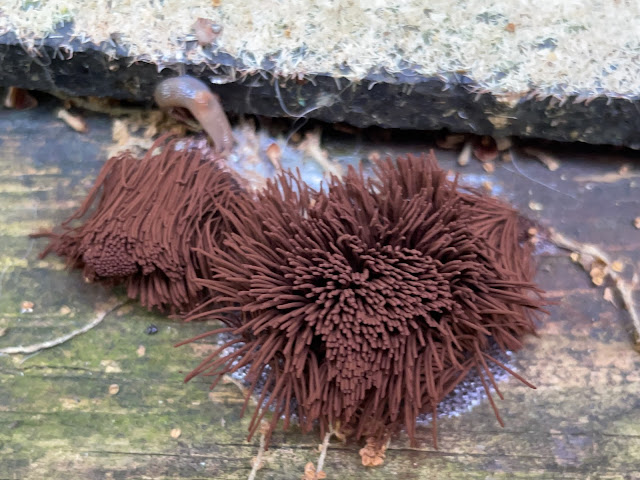I have been seeing these beetles in our wafer ash patch and then had this beautiful picture by Becky Swearingen jump out at me on Bi-State Bugs. In the past I had seen similar colored Pennsylvania Leatherwings, Chauliognathus pensylvanicus, but the pattern wasn't right. This is the margined leatherwing beetle, Chauliognathus marginatus. It appears in late spring and will be gone by mid-summer, about the time that the Pennsylvanians first appear to inhabit their favorite plant, goldenrods.
 |
| Mating Pair - REK |
Without Becky's camera or talent I had to get the lens too close, causing them to scurry away. I chased this mating pair, finally giving up and capturing them. After refrigeration, they slowed down so I could photograph them separately.
 |
| Leatherwing female - REK |
 |
| Leatherwing male - REK |
 |
| Pennsylvania leatherwing-Clay Nichols |
The coloration is confusing as the most prominent feature, the broad black stripe down the elytra is variable, ranging from prominent and full length to a short spot on my two specimens and sometimes even completely absent. The margined species have a yellow head with a black "V" while the Pennsylvanians have an all black head. The black patch of the pronotum (back of the thorax) extends full length rather than being just in the center on Pennsylvanians.
Leatherwings get that title because of their soft flexible elytra wing covers which are hard in most beetles. The family are also referred to as soldier beetles because of their bright colored "uniforms". They nectar on flowers as well as feeding on small insects and their eggs. While the Pennsylvania Leatherwing is usually found in the fall, the Margined crawl are out in early summer. Following mating, they lay their eggs in the soil and ground litter where their larvae will feed until their fall pupation.
 |
| Pollinia afoot - Kareninnature |
Pennsylvania leatherwings crawl around nectaring on the milkweed flowers and get yellow globs wedged on their feet. These are paired sacs of pollen called pollinia. These wedge tenaciously to the beetles' feet making walking awkward. Because they are able strong fliers they can carry their load to nearby flowers where they leave them like a kid with muddy feet. Rather than dusting individual pollen grains, the sacs of pollen are left in an opening on the next plant.
 |
| Beetle boots - Charley Eiseman |
There is a risk in this strategy. A variety of milkweed pollinators can get stuck by the leg if the pollinia is too firmly attached. You can occasionally find a dead insect hanging by its leg, paying the ultimate price for nectar described in this video.
More on the trap at this site.











